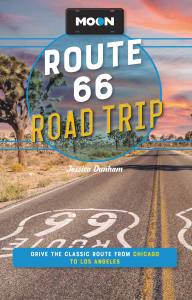Route 66 Through Tulsa, Oklahoma
West of U.S. 169, Route 66 through Tulsa follows 11th Street downtown past several neon Route 66 signs, murals, and old motor courts, including the Desert Hills (near Yale St.). An older alignment zigzags less than one mile north of 11th Street on Admiral Place, traveling west to Lewis Avenue, then south to 2nd Street—but the one-way streets make this route tricky to follow.
To take the more direct post-1932 alignment, follow 11th Street west all the way to the Arkansas River, where it turns south into Southwest Boulevard. Tulsa is fairly easy to navigate, and most sights are located less than a mile from Route 66.
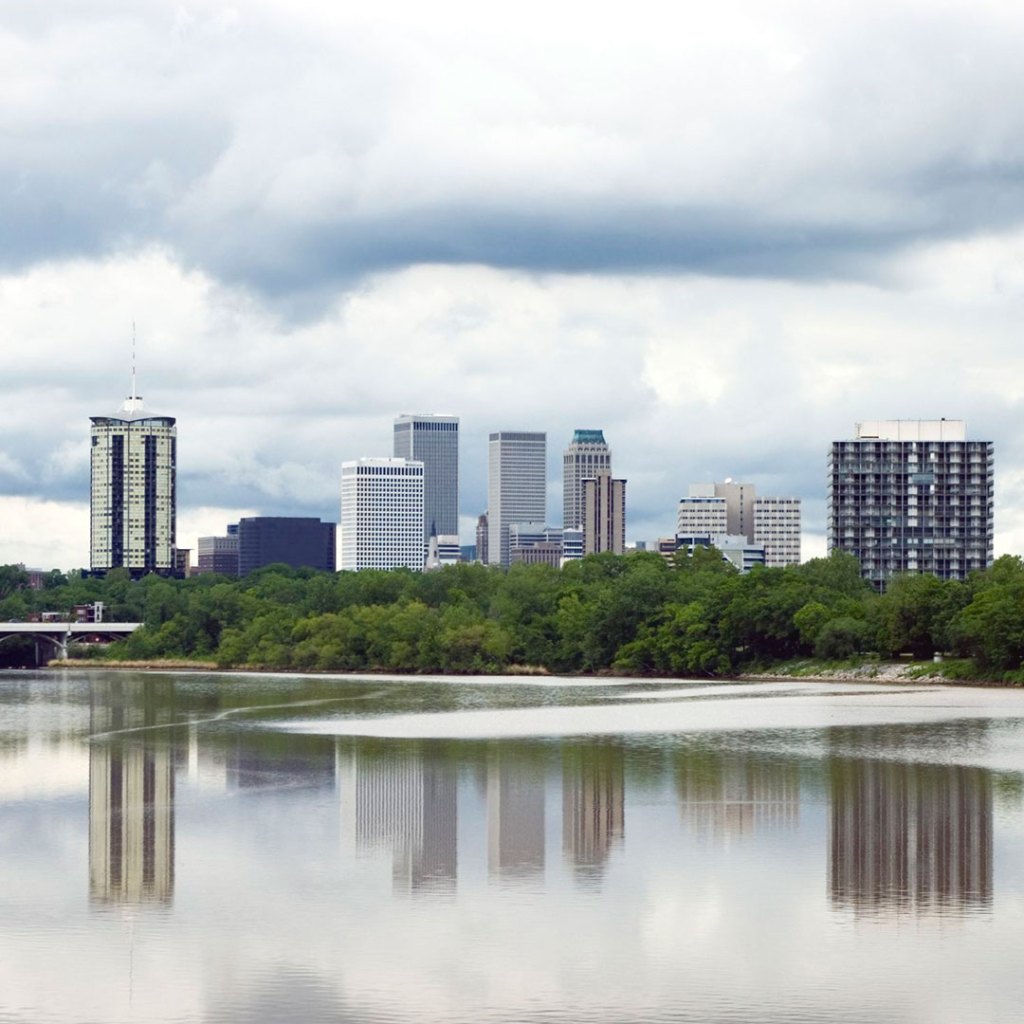
Sights in Tulsa
Downtown Tulsa is encircled within a loop of freeways and highways—U.S. 244 (north), Highways 412 (north) and 75 (east), and State Route 51 (west and south). As Route 66 (11th St.) enters downtown, the road crosses Highway 75; turn north on S. Elgin Avenue to begin exploring the downtown area.
Greenwood Cultural Center
The Greenwood District in Tulsa is an area Booker T. Washington referred to as America’s “Black Wall Street.” The 35-block area was once a vibrant community with the wealthiest black neighborhoods in the south. Not only was it a hotbed of jazz and blues in the 1920s, it housed more than 300 black-owned businesses, including theaters, restaurants, hotels, and law offices.
In June 1921, one of the nation’s worst acts of racial violence broke out in the Greenwood District. The Tulsa Race Riot was instigated by a rumor about a black man assaulting a white woman—and then spun out of control. No one knew what really happened, but most people believe that a 19-year old black man tripped while exiting an elevator and grabbed a white woman’s arm to steady himself. She screamed, and he ran. As the story spread through the town, with each version getting more creative, jealousy over black economic success coupled with inflammatory false reporting led to a riot by an angry white mob. The mob set the Greenwood District on fire and prevented the firefighters from saving the buildings. After 16 hours of rioting, looting, and complete mayhem, hundreds died as Black Wall Street burned to the ground. An estimated 10,000 black people were left homeless, and the riot was responsible for wiping out nearly all of the prosperity and success the Greenwood district had achieved up to that time.

The Greenwood Cultural Center (322 N. Greenwood Ave., 918/596-1026, 9am-5pm Mon.-Fri., free) has a valuable collection of historical memorabilia and photos of the area before, during, and after the riot. Although most of Greenwood District was burned to the ground, the black community persevered and opened businesses such as The Warren Hotel (105 N. Greenwood St.), located down the street from the cultural center. The Warren Hotel was listed in the historic Negro Motorist Green Book.
John Hope Franklin Reconciliation Park
Built as a space of healing and hope in response to the 1921 Tulsa Race Riot, the John Hope Franklin Reconciliation Park (321 N. Detroit, 918/295-5009, 8am-8pm daily, free) opened in 2010 and presents the role of African-Americans in Oklahoma. A 25-foot memorial tower depicts the history of the African-American struggle—from Africa to North America—and stands near three 16-foot granite sculptures based on actual pictures from the 1921 riot.
Woody Guthrie Center
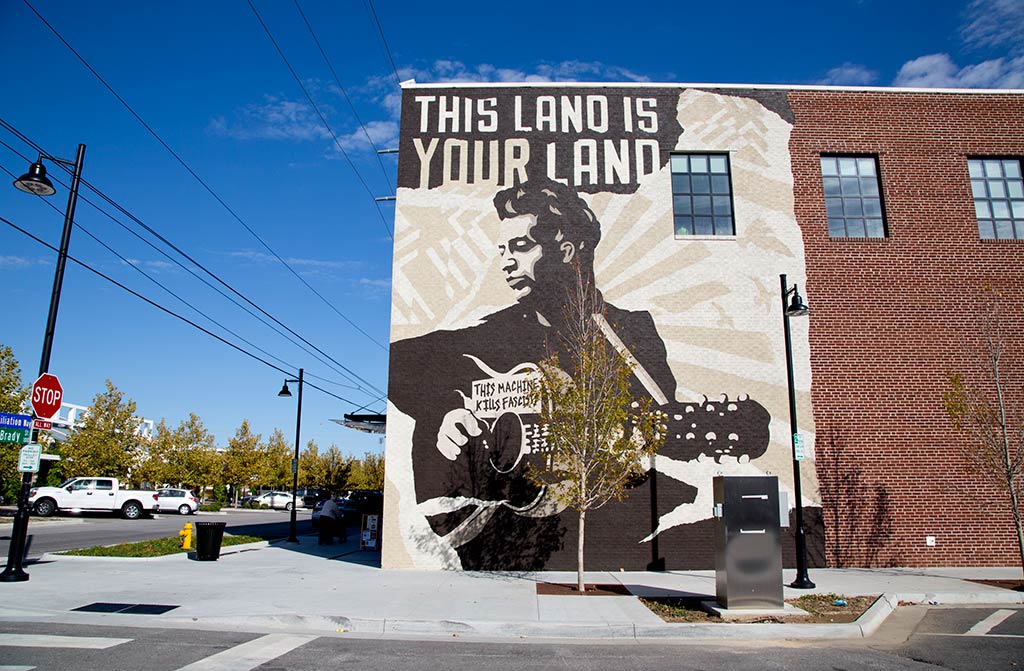
Woody Guthrie’s progressive political views rustled the feathers of Cold War conservatives, but it can’t be denied that he composed some of the most iconic, patriotic songs of our nation; his anthems about the Dust Bowl gave a voice to so many who had lost so much. The Woody Guthrie Center (102 E. Brady St., 918/574-2710, 10am-6pm Tues.-Sun., 10am-9pm First Fridays, $8) offers a comprehensive archive of more than 10,000 photos, journals, notes, illustrations, and sketches, as well as the lyrics to “This Land is Your Land” written in Guthrie’s own hand. The 12,000-square foot facility, on a corner of the Brady District, includes exhibits, a research facility, educational programs, field trips, and songwriting sessions.
Oklahoma Jazz Hall of Fame
The Oklahoma Jazz Hall of Fame (5 South Boston, 918/928-5299, $15-20), once housed in the Greenwood Cultural Center, now lives in the historic Art Deco Union Depot. They host an ongoing concert series, cultural events, and blues, gospel, and jazz performances. An on-site museum exhibits memorabilia, photographs, and historical information about greats like Chet Baker and Jimmy Rushing.
Art Deco Architecture
Born in the 1920s, Art Deco was characterized by bold geometric shapes and motifs of sharply defined chevrons (“v” shapes), terra-cotta details, stylized floral patterns, low-relief designs, strong colors, and forms inspired by Native American artwork. At the turn of the 20th century, Tulsa changed from a small frontier settlement into a boomtown when oil was discovered. It soon became the “Oil Capital of the World,” and oil barons built incredible skyscrapers and beautiful buildings. As a result, Tulsa has one of the largest concentrations of Art Deco architecture in the United States.
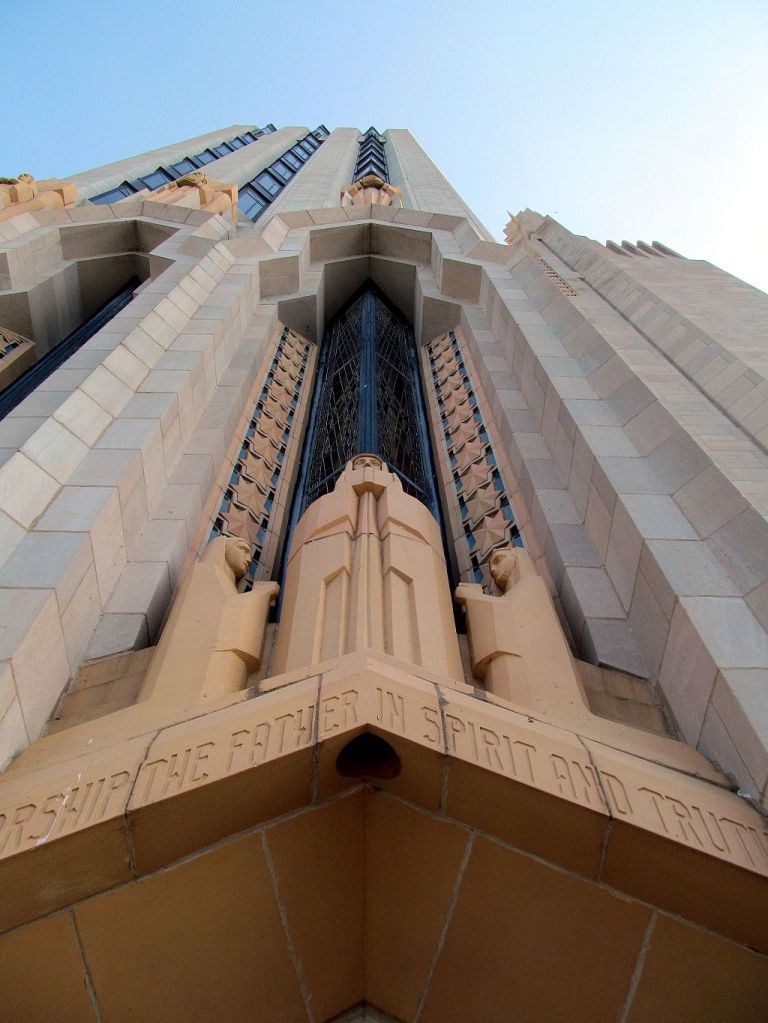
Downtown Tulsa is a great place for a concentrated collection of some of the most stunning examples of Art Deco architecture in the United States. The Philtower and Philcade buildings, the Tulsa Club, the Atlas Life building, the Public Service Company of Oklahoma, and the Boston Avenue Methodist Church are a great start.
For a list of almost 40 Art Deco buildings throughout Tulsa, visit the Tulsa Preservation Commission (175 East 2nd St., Ste. 570, 918/576-5687). The Tulsa Historical Society (2445 S. Peoria Ave., 918/712-9484, 10am-4pm Tues.-Sat., $5) provides Art Deco walking tours.
Tulsa Art Deco Museum
Tulsa Art Deco Museum (511 S. Boston Ave., 918/804-2669, 8am-6pm Mon.-Fri., 11am-6pm Sat.) is a small but informative museum about the design and era of Art Deco culture. A collection of artifacts such as jewelry, advertising artwork, silverware, and clothing show how pervasive the style was and how it became a part of everyday life. The museum is located in the lobby of the gorgeous Philcade Building; a gift shop and docent-led tours are available upon request.
Newsletter Signup
By clicking ‘Sign Up,’ I acknowledge that I have read and agree to Hachette Book Group’s Privacy Policy and Terms of Use
Creek Nation Council Oak Park
Tulsa was created as part of the Indian Removal Act (the Trail of Tears). In the 1830s, Choctaw, Cherokee, Muscogee (Creek), Chickasaw, Cheyenne, Comanche, Apache, Seminole, and other tribes were relocated to this region after being forced to surrender their land east of the Mississippi River to the federal government. Their new land eventually became the state of Oklahoma.
Located south of the Highway 64/51/75 interchange and near the Arkansas River is Creek Council Oak Park (1750 S. Cheyenne Ave.), where a large burr oak tree marks the traditional ceremonial ground chosen by the Lochapoka clan of the Creek Indians. After being forced off their land in 1836, and losing 161 members on the horrific Trail of Tears, 469 tribe members arrived on this hill overlooking the Arkansas River. They named this place Tulasi (Tulsa is derived from the Lochapoka word tulasi, which means “old town”). The Tulsa-Lochapoka gathered here for ceremonies until 1896. The park is often referred to as Tulsa’s first City Hall, and commemorative tribal ceremonies are held each year.
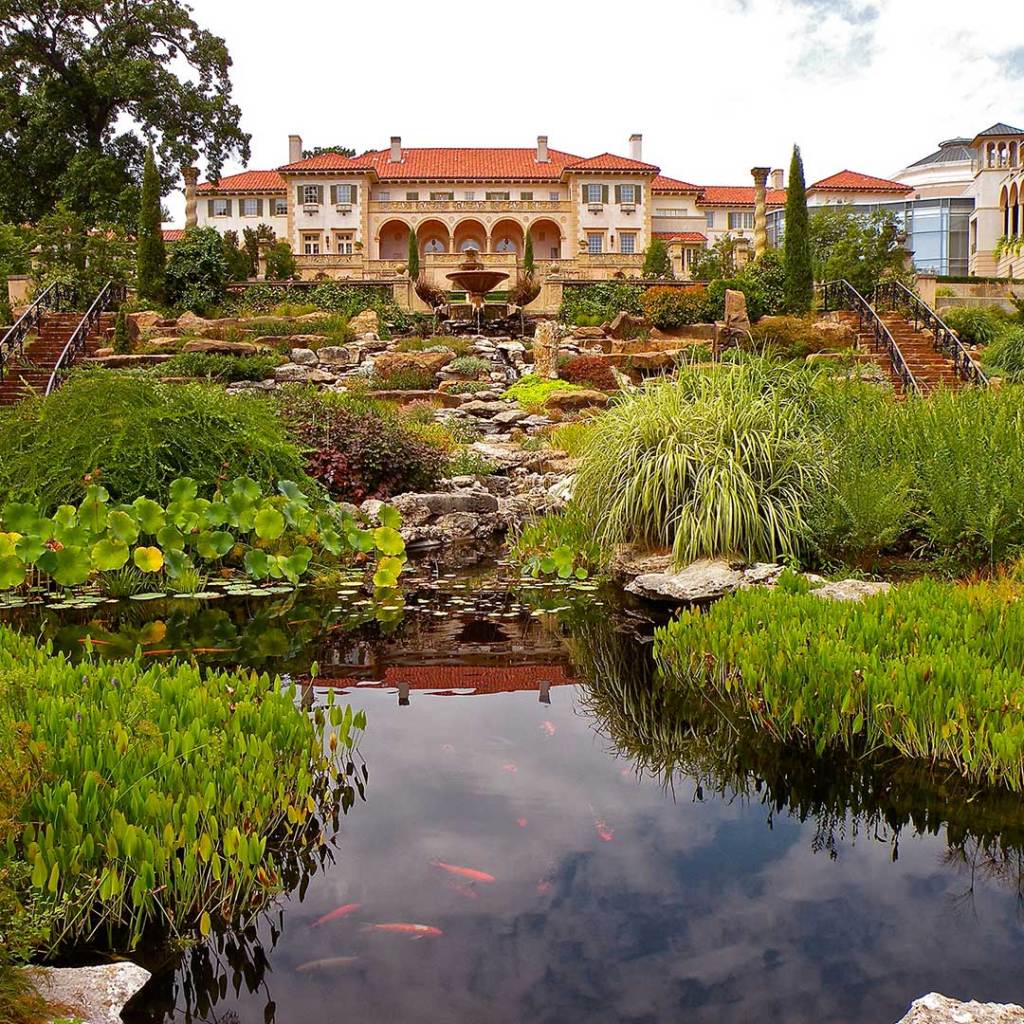
Philbrook Museum of Art
The Philbrook Museum of Art (2727 S. Rockford Rd., 918/749-7941, 10am-5pm Tues.-Sun., 10am-8pm Thurs., $9) was a 72-room mansion built during Tulsa’s gilded age, when oil barons had more money than they knew what to do with. Built in 1926, the mansion was designed to look like an Italian villa. Today, the property is surrounded by 23 acres of beautifully manicured gardens and houses collections of art from all over the world. To get there from E. 11th Street (Route 66), turn left (south) on S. Peoria Avenue and drive 1.5 miles. Turn left (east) on E. 27th Place; the Philbrook will be one block straight ahead.
Golden Driller
At the entrance of the Tulsa Expo Center is a 76-foot tall, 22-ton statue of an oil worker standing over a (real) oil derrick. The Golden Driller (4145 E. 21st St., 918/596-2100, free) was built in 1966 as a monument for petroleum industry workers at a time when Oklahoma was considered the oil capital of the world. The Golden Driller was built to withstand 200-mph tornadoes; although he has been vandalized and assaulted by shotgun blasts, the city patches him up and slaps on a new paint job. It’s a Tulsa icon that is built to last.
To get there from E. 11th Street (Route 66), turn left (south) on S. Sandusky Avenue. In one mile, turn right (west) on E. 21st Street. Take an immediate right into the Tulsa Expo Center parking lot. The Golden Driller is in the front of the Expo Center.

Gilcrease Museum
The Gilcrease Museum (1400 N. Gilcrease Museum Rd., 888/655-2278, 10am-5pm Tues.-Sun., 10am-8pm Thurs., $9) sits on 460 acres with 23 themed gardens and features more than 10,000 paintings, prints, drawing, and sculptures by 400 artists from colonial times to the present. They also have an unparalleled collection of Native American artifacts, historical manuscripts, and art.
To get there from E. 11th Street (Route 66), turn right (north) on S. Denver Avenue and drive one mile. Turn left (west) on W. Edison Street. Drive one mile to N. Gilcrease Museum Road and turn right (north). The museum will be on the left.
Cyrus Avery Plaza
As Southwest Boulevard crosses the Arkansas River leaving downtown, larger-than-life bronze sculptures, flags from the eight Route 66 states, and a huge Route 66 sign hang over the Mother Road at Cyrus Avery Plaza (Southwest Blvd. and Riverside Dr., dawn-dusk daily, free), which pays homage to the man considered by many to be the “Father of Route 66.” A sculpture by Robert Summers depicts Avery climbing out of his Model T to help a farmer in a horse-drawn carriage coming west from Tulsa’s oil fields; Avery’s wife, daughter, and cat are also in the car. The sculpture is about 60 feet long and 15 feet high and weighs nearly 20,000 pounds. Free parking is available near the pedestrian bridge that crosses 11th Street.
Route 66 Village
Train enthusiasts will appreciate Route 66 Village (3770 Southwest Blvd., 918/609-0405, dawn-dusk daily, free), home to a restored Frisco 4500 steam engine that carried passengers from St. Louis through Tulsa to Oklahoma City from 1940 to 1947. A business lounge car was built in 1929 with six rooms, a kitchen, and a lounge area. Also on-site is an oil tank car built in 1917 and a 154-foot tall oil derrick, currently the largest in North America.
Brady Arts District
The Brady Arts District is the oldest section in Tulsa, with red-brick buildings and an urban garden. This walkable neighborhood is a vibrant hotspot for artists, craftspeople, and merchants, with restaurants, nightclubs, galleries, and a popular food truck court. The Art Crawl occurs the first Friday of every month with live music, chocolate-making, and glass-blowing demonstrations.
Admiral Twin Drive-In
The Admiral Twin Drive-in (7355 E. Easton St., 918/392-9959, opens at dusk, $7) is located on the pre-1930s alignment of Route 66. This classic drive-in from the early 1950s shows blockbuster films on two nine-story screens. Two tickets, popcorn, and a drink will run you less than $20—a better deal than most indoor movie theaters. Your car must have FM radio to hear the movie. Get there early, as this place is popular.
Circle Cinema
For documentaries, foreign films, or an indie flick, Circle Cinema (10 S. Lewis Ave., 918/592-3456, office 918/585-3405, $6.50-9.50) is the place. This is the oldest historic movie theater in Tulsa: The theater opened in 1928, when the price of a ticket was only a dime, and a nickel would buy an orange juice and a funnel-shaped cup of peanuts.
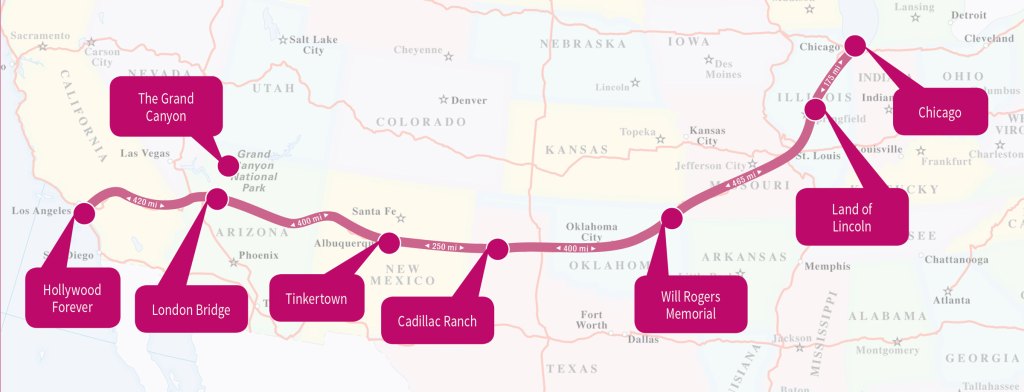
Newsletter Signup
By clicking ‘Sign Up,’ I acknowledge that I have read and agree to Hachette Book Group’s Privacy Policy and Terms of Use
Pin it for Later


